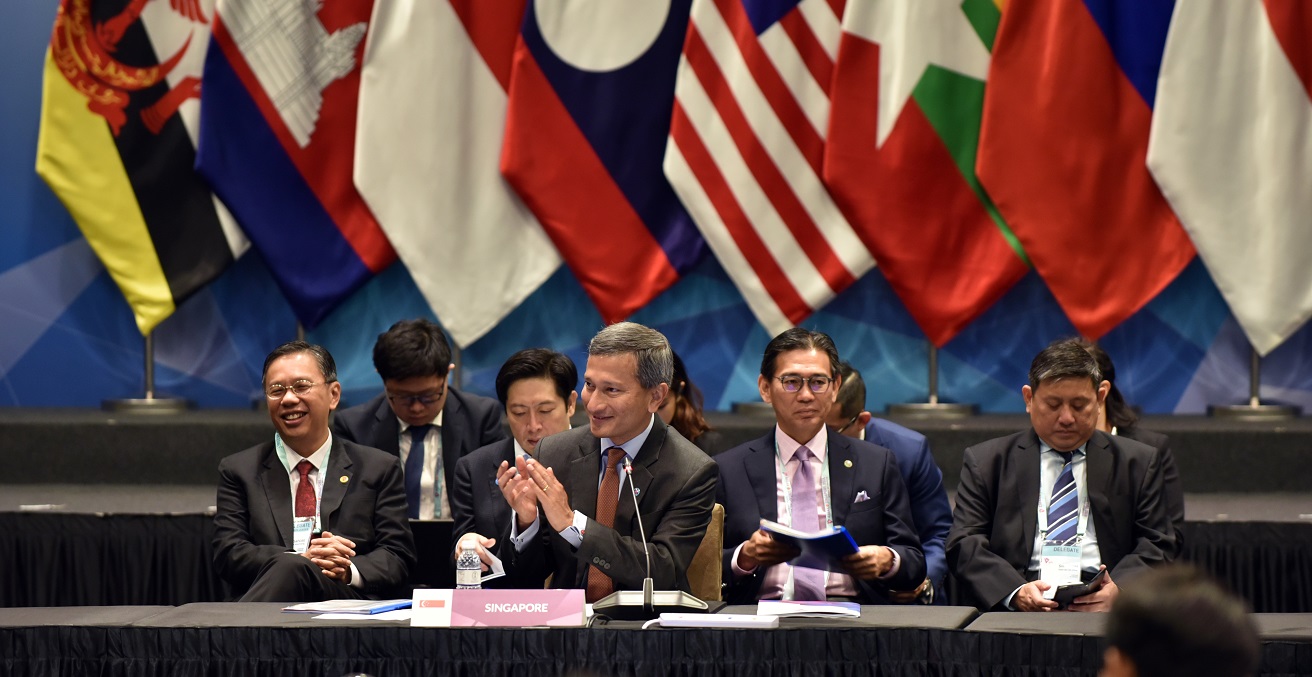RCEP Has Limited Trade Gains and Ignores Labour and Human Rights

Australia’s recent signature of the Regional Comprehensive Economic Partnership has attracted world attention for its significance in consolidating Asia-Pacific geopolitical relations. But in celebrating this agreement, we seem to have forgotten its unfinished business regarding labour and human rights.
The Regional Comprehensive Economic Partnership (RCEP) is a trade agreement between Australia, China, Japan, South Korea, New Zealand, and the ten ASEAN countries. It was signed online on 15 November 2020. India left the negotiations in November 2019, but the deal still covers one third of the world’s population and economic output. Despite breathless claims from some commentators, the RCEP is not a multilateral agreement because it does not involve the 164 member countries of the World Trade Organization. But its 15 member-countries from the Asia Pacific make it the world’s largest regional trade agreement.
Expanded trade can create jobs and improve peoples’ lives. However, governments have often been reluctant to admit that all trade deals have both winners and losers because they reduce tariffs and other trade barriers, intensify competition, and result in job losses in some industries. “Other trade barriers” also include many areas of social regulation. The devil is in the detail, and the costs and benefits of the RCEP and other agreements need to be evaluated based on their impacts on human rights, labour rights, and environmental sustainability.
Evaluation of the RCEP should include the extent of community involvement and parliamentary scrutiny of the agreement, the likely impacts on employment, and access to essential services. As well, it should account for formal commitments to internationally recognised labour rights, human rights, and environmental standards that Australia has endorsed through United Nations and International Labour Organization agreements.
The RCEP was eight years in the making, and negotiations were finalised in November 2019. Australia and other governments refused to release the text until after it was signed, continuing the secretive trade agreement process in Australia which minimises democratic participation.
India left the deal because of concerns about the RCEP’s potentially negative impact on its local industry development. Since Australia already has free trade agreements with all of the other RCEP member countries, India’s absence means there are no additional export opportunities for Australian business, which is the main basis for trade agreements to create additional employment.
The Australian government has refused to commission an independent study of the economic or social costs and benefits of the RCEP in Australia, so there is no assessment of them. The government claims Australia will benefit from the symbolic value of the RCEP commitment to open economies and from common regional trade rules and customs procedures.
We do know that the RCEP text was completed before the COVID-19 pandemic, and has not been revised since. The government took actions during the pandemic to increase Australia’s local manufacturing capacity to produce medical equipment, vaccines, and other essential products. These actions were needed to save lives, but in fact contradict the rules embodied in the RCEP, which say governments should not give assistance to local industries.
During the pandemic, governments can claim these departures from the rules are covered by public health and national security exceptions. But the prime minster has since announced longer term local industry support as part of plans for economic recovery and the trade minister has said that the challenge for future trade policy is “to get the balance right for Australia by having domestic capacity in key certain areas.” However, the RCEP text on trade in goods seems to contradict these intentions. RCEP rules will integrate Australia further into regional production chains. It will discourage government assistance for local industries at a time when many argue that even more active industry policies are needed to rebuild the economy in the wake of the pandemic.
Other RCEP rules reach beyond traditional trade issues. They entrench increased foreign investment in essential services like health, education, water, energy, telecommunications, and financial services, and restrict the ability of future governments to regulate them in the public interest. RCEP rules freeze regulation at current levels for most services unless they are listed as exceptions. These rules suit the needs of international investors, but could restrict the flexibility needed to deal with future crises like pandemics and climate change.
Despite claims about the benefits of common standards, the RCEP has no commitments to internationally recognised labour rights and environmental standards which Australia and other RCEP governments have endorsed through the United Nations and the International Labour Organization. Such commitments are included in some other agreements like the Comprehensive and Progressive Agreement for Trans-Pacific Partnership and Australia’s current trade negotiations with the EU, although there are debates about their enforceability.
In RCEP member countries like China and Myanmar, there is mounting evidence of labour rights and human rights abuses. But the RCEP has no provisions to deal with issues like forced labour or child labour, and no mention of climate change. In the context of post-pandemic recessions, without such standards the RCEP could increase competitive pressures, contributing to a race-to-the-bottom on these standards.
There are also some positive omissions. Despite their inclusion in early leaked drafts of the text, the RCEP does not give special rights for global corporations to sue governments, known as investor-state dispute settlement (ISDS), although this may be revisited two years after ratification. ISDS is controversial because it gives additional legal rights to global companies that already have enormous market power to claim billions in compensation for legal changes that may harm their investments, even if the changes protect human rights. In an obscure Australia-Hong Kong investment agreement, ISDS enabled the Philip Morris tobacco company to claim billions from Australia over its tobacco plain packaging law, and there have been other cases against laws and policies on the environment, indigenous land rights, and minimum wages. A United Nations special rapporteur’s report on ISDS argued that it undermined human rights and urged governments to exclude ISDS from trade agreements.
Nor are there increases in patent monopolies for medicines above the WTO standard of 20 years, advocated by pharmaceutical companies but opposed by public health and human rights groups. Longer monopolies on medicines delay the availability of cheaper forms of medicines, especially in low income countries, and would be even more damaging in the context of the pandemic. ISDS and stronger medicine monopolies were modelled on clauses in the original Trans Pacific Partnership between the US and 11 Pacific Rim countries. They were blocked in the RCEP by India and most ASEAN countries.
In Australia, the RCEP will be reviewed by a parliamentary committee with a government majority which cannot change the text, a process which will continue into March next year. Parliament will only vote on the implementing legislation, not the whole agreement. The Australian Fair Trade and Investment Network and other community groups will make submissions to the committee. However, without any independent evaluation of the deal’s costs and benefits, and no parliamentary vote on the whole agreement, this process allows little consideration of the real impacts of the RCEP on human rights, labour rights, and environmental sustainability in Australia or other RCEP countries.
Dr Patricia Ranald is an honorary research associate at the University of Sydney and is the convener of the Australian Fair Trade and Investment Network.
This article is published under a Creative Commons Licence and may be republished with attribution.





